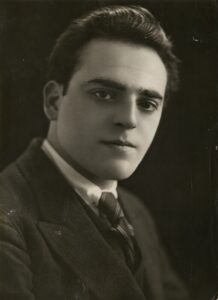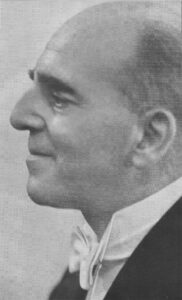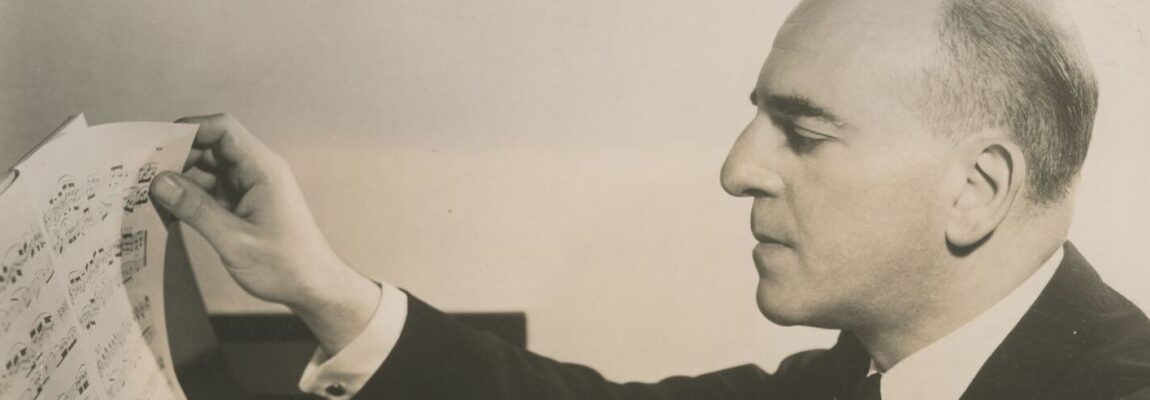The British pianist Solomon Cutner (primarily known just as Solomon) was born August 9, 1902, making this his 120th birthday. While I have long planned a comprehensive page with detailed biographical material, this anniversary caught me unprepared (while traveling overseas) so I am for the time being compiling some important musical (and other) recordings of the artist for this anniversary.
 Some of the basics of Solomon’s biography are well-known – particularly the fact that he suffered a stroke in 1956 but lived unable to play for over 30 more years until he died in 1988 – but other elements are not as widely grasped. It has been oft reported that he was child prodigy who was abused during his tutelage with the controlling Mathilde Verne; less in the public mind is that he later went to Paris to train with the eminent French pedagogue Lazare-Lévy, which afforded him a particularly masterful approach to pedal technique and tonal control, as well as an affinity with repertoire that his discography does not fully explore. These and other biographical details will be more fully expanded upon once I add to this page in the future (though there are a few interesting tidbits in some of the audio below).
Some of the basics of Solomon’s biography are well-known – particularly the fact that he suffered a stroke in 1956 but lived unable to play for over 30 more years until he died in 1988 – but other elements are not as widely grasped. It has been oft reported that he was child prodigy who was abused during his tutelage with the controlling Mathilde Verne; less in the public mind is that he later went to Paris to train with the eminent French pedagogue Lazare-Lévy, which afforded him a particularly masterful approach to pedal technique and tonal control, as well as an affinity with repertoire that his discography does not fully explore. These and other biographical details will be more fully expanded upon once I add to this page in the future (though there are a few interesting tidbits in some of the audio below).
I’ll start off with this tribute with a feature I prepared a few years ago: the five-part CBC Radio documentary about Solomon prepared by Canadian pianist and pedagogue Robert Silverman. As Silverman introduces on the tribute page, the project came up against some blocks when it came to interviewing colleagues of the pianist but he was fortunately able to use previous audio snippets from a BBC documentary about the artist – and he got to meet his idol in his home as well. The series is an example of the kind of dedicated effort (and expense) that radio used to go to in order to produce programs for surprisingly limited consumption – and fortunately, decades later we can continue to enjoy these wonderful episodes.
I am delighted to share another spoken word treat that I hadn’t found until very recently: two 1954 New Zealand radio interviews with Solomon while he was on tour of the Southern Hemisphere! It’s marvellous to hear his voice so clearly, explaining his experience traveling as a pianist, various international audiences, his programming, and how he felt about the recording process. Now if only some of his recitals from that tour could be found, as he played both Debussy and Chopin, both of which he’d only officially recorded in the 78rpm disc era.
Click here for the first interview
I’ve long been a great fan of Solomon’s recordings made in the 78rpm disc era and featured a good number of them in this podcast episode:
 While some of these are featured as standalone YouTube clips below, a number are not and in this program I discuss in a bit more detail what makes Solomon’s playing so superb in these recordings. It is certainly well worth hearing all of these recordings – though naturally with a pianist of Solomon’s calibre, everything is worth exploring.
While some of these are featured as standalone YouTube clips below, a number are not and in this program I discuss in a bit more detail what makes Solomon’s playing so superb in these recordings. It is certainly well worth hearing all of these recordings – though naturally with a pianist of Solomon’s calibre, everything is worth exploring.
Solomon’s first ever recording session took place on November 29, 1929, when he set down these two solo works by Liszt, La leggierezza and Au bord d’une source. These performances were to appear on Columbia’s new ‘Celebrity LX’ label, which featured Leopold Godowsky, Ignaz Friedman, and his compatriot Evlyn Howard-Jones. While Solomon is not as widely remembered today for his performances of the virtuoso repertoire as he is for the German and Viennese classics, he certainly had a tremendous affinity for Liszt – despite having only set down three solo works (an abridged Hungarian Rhapsody No.15 would follow the two shared here in 1932) and one with orchestra (the Hungarian Fantasia, which he’d played publicly at the age of 10). Both performances demonstrate crystal-clear articulation, subtle pedaling, and attention to structure, with his virtuosic mastery only serving the music.
Here he is in his first commercial recording of the Tchaikovsky Piano Concerto No.1, with the Hallé Orchestra conducted by Sir Hamilton Harty. This recording was made for the Columbia label at two sessions on November 30, 1929 and February 8, 1930 in the Central Hall, Westminster, London. (He would record a second version of this same work with the Philharmonia Orchestra conducted by Issay Dobrowen May 26-28, 1949.)
The pianist had played this concerto very early in his career – including at Queen’s Hall when he was only 11 (the reports that he’d played it at the age of 8 are somewhat exaggerated: he’d played the 2nd movement). One reviewer stated that “the child has an astounding musical organization and even he banal concerto of Tchaikovsky could not hie the warmth of his musical conceptions. Then, added to this, there is a bigness to his playing which is quite phenomenal; the opening chords were taken with tremendous power and authority, while his more digital work was thoroughly sound throughout, and his sense of rhythm is very fine…”
The first date for this recording was the great British pianist’s second time in the studio, the November 30th session taking place the day after his first ever recording session, at which he put on disc the two solo works by Liszt shared above. This glorious reading finds Solomon playing with great fire as well as the refinement for which he was celebrated, with his remarkable palette of tonal colours, ironclad rhythmic pulse, attentive voicing, and wonderful nuancing. His unobtrusive technique meets all the technical challenges of the work yet without any ostentatious displays, and always with a beautiful singing sonority and elegant phrasing.
Solomon’s 1942 HMV recording of the Brahms Variations and Fugue on a Theme of Händel Op.24 is a classic of the gramophone. Solomon had attempted to record this work at a May 19, 1941 session with producer Walter Legge, only for the project to be abandoned after three sides were recorded (perhaps due to war-time interference).
They returned to the studio to begin afresh in July 1942 and the project would require more sessions than usual for the technically composed Solomon: the 6 sides required a total of five sessions between July 7 and August 5, some sessions yielding only a single usable take (and one session yielding none).
The result, however, is remarkable, one of the landmark recordings of the massive composition. Solomon’s gorgeous singing tone, enormous dynamic range, and beguiling legato phrasing are put to great use in this patrician yet thrilling reading: noble, majestic, contemplative, evocative… the varied emotional content of the work is brilliantly captured and expressed by the master pianist.
Solomon made about a CD’s worth of Chopin recordings in the 78rpm disc era but recorded not a note of the Polish composer’s music during the LP era, though he was apparently scheduled to record both Sonatas – a project that sadly fell through when Solomon suffered his debilitating stroke in 1956.
While posthumously he has been more recognized for his readings of Beethoven, Schumann, and Brahms than he was for Chopin, Solomon’s affinity for his idiom is abundantly clear from the very first note of any of the discs he made of the composer’s works, and this glorious reading of the Ballade No.4 in F Minor Op.52 is no exception. It is a truly individual interpretation, eschewing any inclination to bombast, restrained but certainly not devoid of emotion, as the climaxes are all the more pronounced when they occur. Solomon’s fluid phrasing and gorgeous tonal colours are absolutely mesmerizing.
This remarkably noble conception is a very different approach to this ever-popular work and is truly a landmark recording.
An unexpected pairing is this disc of Solomon playing Debussy’s Voiles. As noted above, Solomon studied with the great French pianist and teacher Lazare-Lévy, though he certainly didn’t need to train in France in order to excel at Debussy. Alas, in the LP era Solomon did not record much outside the Germanic repertoire and most of his greatest 78rpm discs were seldom reissued… this one among them.
This superb 1946 HMV recording features incredible pedalling – an evocative haze that nevertheless has enough clarity to appreciate his articulation – and refined dynamic shadings, along with a gorgeous singing sonority, magnificently voiced chords, and magical strumming effects.
Here is Solomon in a glorious April 27, 1948 recording of Liszt’s Hungarian Fantasia with the Philharmonia Orchestra conducted by Walter Susskind. This high-octane performance features a stunning range of tonal colours, from a shimmering golden treble to a full-bodied resonant bass, with sparkling runs and magnificently sculpted phrasing, crisp articulation, and amazing dynamic control. What continues to amaze me is how even in fast or loud passages there is never any compromise to the quality of his sound: speed or volume are not a license to bang or produce an ugly tone, and articulation and note length are also consistent. Absolutely incredible playing of the highest order, proving that virtuosic, thrilling pianism need not be lacking in style and beauty.
In 1951, Solomon would begin recording all of the Beethoven Sonatas onto LP, a task that he sadly did not complete before that fateful stroke in 1956 ended his career. The two Sonatas which he recorded in the 78rpm era were re-recorded in these 1950s sessions and it was the later versions that were regularly reissued on LP over the years, the earlier takes becoming quite obscure.
The grooves of the 78rpm discs in this earlier traversal of the Moonlight capture Solomon’s rich singing sonority marvellously well, as does the acoustic of the studio and wonderfully calibrated Steinway No.299 at EMI’s Abbey Road. Throughout this performance, one can marvel at the pianist’s gorgeous tonal palette, refined dynamic layering, and magical pedalling – how skillfully he sustains an auric glow in the first movement without ever muddying the overall texture … and at an incredibly spacious tempo! Also remarkable is his crisp articulation in the second and third movements, as well as his rhythmic buoyancy.
Fortunately some film footage of Solomon exists, although it is scant: a Schubert Impromptu and the Beethoven Appassionata Sonata, both filmed at a January 15, 1956 BBC TV broadcast, a matter of months before his stroke. Here is the Schubert Impromptu in A-Flat Major D.899 No.4. With economy of movement and an absence of sentimentality – but not with a lack of emotion – Solomon plays with breadth of tone and dynamic range, transparent voicing, judicious use of rubato in the middle section, and attentive transitions between phrases and sections.
Here is the only issued commercial recording of Solomon playing an original solo Bach work: a September 15, 1951 recording of Bach’s Prelude and Fugue in C Minor BWV 871, from Book II of the Well-Tempered Clavier.
A 1956 broadcast recording exists of Solomon playing the Italian Concerto, and although he recorded the Prelude and Fugue in G BWV 860 from Book 1 of the WTC, that performance has not been issued. He did set down two wonderful performances of Bach arrangements – Liszt’s transcription of the Prelude and Fugue in A Minor and Busoni’s of Wachet Auf! – so the present excerpt from the WTC is therefore of great interest.
For some reason, this recording has scarcely been released: I have only found it on a German 8-LP set that features an array of the pianist’s more obscure recordings, which according to the Solomon biography by Bryan Crimp is the only LP issue of the recording (the box set incorrectly states that the recording dates from July 1, 1952), though it seems to have been issued on 45rpm disc in the 1950s. This performance finds Solomon playing with his trademark clarity of articulation, crisp rhythmic bite, transparent textures, and luminous tone. A marvellous interpretation that makes one wish he had recorded more Bach!
A remarkable yet little-known recording by the legendary pianist is this May 20, 1948 reading of the Bach-Busoni chorale prelude Wachet Auf! – a recording I first heard of when I visited Elisabeth Schwarzkopf to discuss my Lipatti research in the summer of 1992. She told me she was sure Lipatti had recorded this chorale prelude and raved about the beauty of the performance. When I returned to Montreal, I met with a CBC producer I knew who said he had this 78 disc and said this was probably the one she meant. I made a transfer and sent Schwarzkopf a cassette, and she wrote an enthusiastic card back saying that this had been recorded around the same time that Lipatti was recording (true) and that she had gotten them confused in her mind (also true).
With an incredibly spacious tempo, rich tonal palette, brilliant voicing, and tremendous control, Solomon creates a truly reverent atmosphere in this superb performance.
To close, one of my favourite discs by the great artist: his April 2, 1946 recording of Déodat de Séverac’s Où l’on entend une vieille boîte à musique – and what a musical box effect Solomon creates, with his glistening tone, precise articulation, and some of the most amazing pedalling ever recorded. How he creates that haze without obscuring his articulation is beyond me .. magical!
